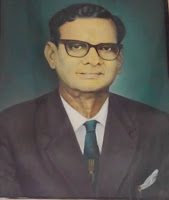Harikatha (Story of Lord) is a unique art form, a combination of poetry, music, and dance, where the storyteller narrates a story based on the episodes of Hindu mythology. Back in the days, Harikatha was the famous medium of entertainment, which helped to provide social, cultural, and religious views to the public on a larger platform. The exponent of Harikatha should be able to compose and recite extempore the objective of the performance is to entertain and educate both the layman and the cultured scholar.
 The Telugu form of Harikatha was originated in Coastal Andhra during the 19th century by Ajjada Adibhatla Narayana Dasu with his Kavyas and Prabandhas. He was born to Adibhatla Venkata Chayanulu and Lakshmi Narasamma on 31st August 1864 at Ajjada village on the shores of Swarnamukhi River, near Bobbili (present-day Balijipeta Mandal of Vizianagaram, Andhra Pradesh).
The Telugu form of Harikatha was originated in Coastal Andhra during the 19th century by Ajjada Adibhatla Narayana Dasu with his Kavyas and Prabandhas. He was born to Adibhatla Venkata Chayanulu and Lakshmi Narasamma on 31st August 1864 at Ajjada village on the shores of Swarnamukhi River, near Bobbili (present-day Balijipeta Mandal of Vizianagaram, Andhra Pradesh).
This genius was gifted with intuitive perception. He was a poet, philosopher, dancer, vaggeyakara, musician, litterateur, linguist and creator of the modern school of Harikatha. He has profound knowledge in many languages like Telugu, Sanskrit, English, Hindi, Tamil, Arabic, Urdu, Bengali, and Persian. His musical accomplishments left maestros of the music world to feel divine for his ability to sing to five different talas, beat with the two arms, two feet, and the head.
He was an ashtavadhani and penned about 20 Harikathas apart from contributing his share to Telugu Literature through his about hundred books of literal work including his famous works Nava Rasa Tarangini, Jagadyoti, Talli Vinki, etc. His “Seema Palku Vahi” is the Telugu dictionary that has no single Sanskrit word. He translated Persian Poet, Omar Khaiyam’s poetry into Sanskrit and Telugu. He wrote a comparative treatise on the works of Kalidasa and Shakespeare wrote and composed a Geeta-Malika comprising 90 Carnatic ragas and he composed Music for all the 72 Carnatic ragas setting him next to Tyagaraja. Scholars said while witnessing his inimitable skills, “what Saint Thyagaraja is to Tanjore is Adi Bhatla to Vizianagaram”.
His contribution to Harikatha art is impeccable. Even when there were no prerequisites like power, microphones and sound systems, this wonderful musician stood out and managed a multitude of people with his resonant voice. Sooner, he took Andhra by storm with his outstanding skills in Carnatic classical music, excellence in languages and command over poetic nuances.
Narayana Dasu detached himself to fame and fortune and always believed in and dedicated himself to his art. To honor and tribute Narayana Dasu for his exemplary services, the Maharajah of Vizianagaram established a college, which was the first music college in South India, “Maharaja’s Government College of Music and Dance” on 5th February 1919. Maharaja offered Narayana Dasu to hold the position of the Head of the College, but, Narayana Dasu accepted the position saying that he would treat the college as a Temple of Sri Rama and him being the devotee.
By sheer coincidence, Mysore Maharajaj H.H. Sri Chamaraja Wadiyar happened to feast his eyes on Narayana Dasu, who was performing in Mysore at that time. Pleased with the performance, Maharaja invited him to the Mysore Court where the arrangements were made to accommodate 600 plus officials, to watch Narayana Dasu’s performance live. After the performance, Maharaja showered Narayana Dasu with praises and offered the position of Court’s Musician. But Narayana Dasu declined it firmly saying he wanted to lead his life in the service of God.
He died on 2nd January 1945 when he was 80 years old and on the same tithi of ‘Pushya Bahula Panchami’ on which day Saint Thyagaraja Swamy also reached the abode. He wrote his autobiography called “Naa Yeruka” and Sangeetacharya Dr. Vyzarsu Balasubrahmanyam penned “The Musical Genius of Sri Adibhatla Narayana Dasu” portraying Dasu's musical excellence.
Chellapilla Venkata Sastry, a Telugu Scholar said affectionately, “Dasu’s art is like rose poetry, dance, and music”.









